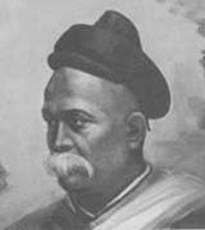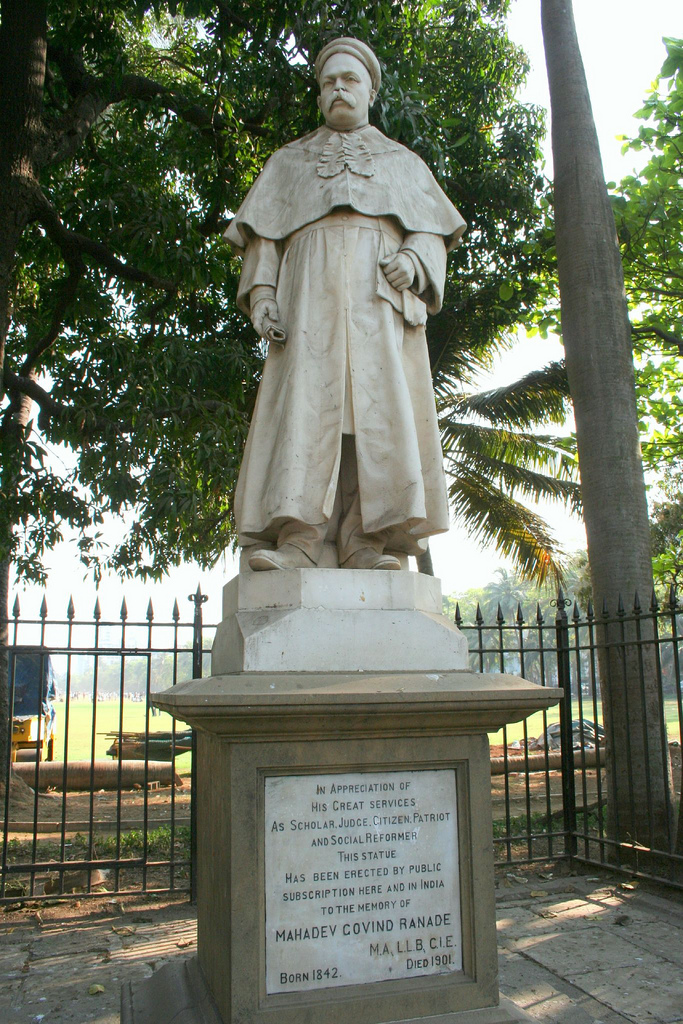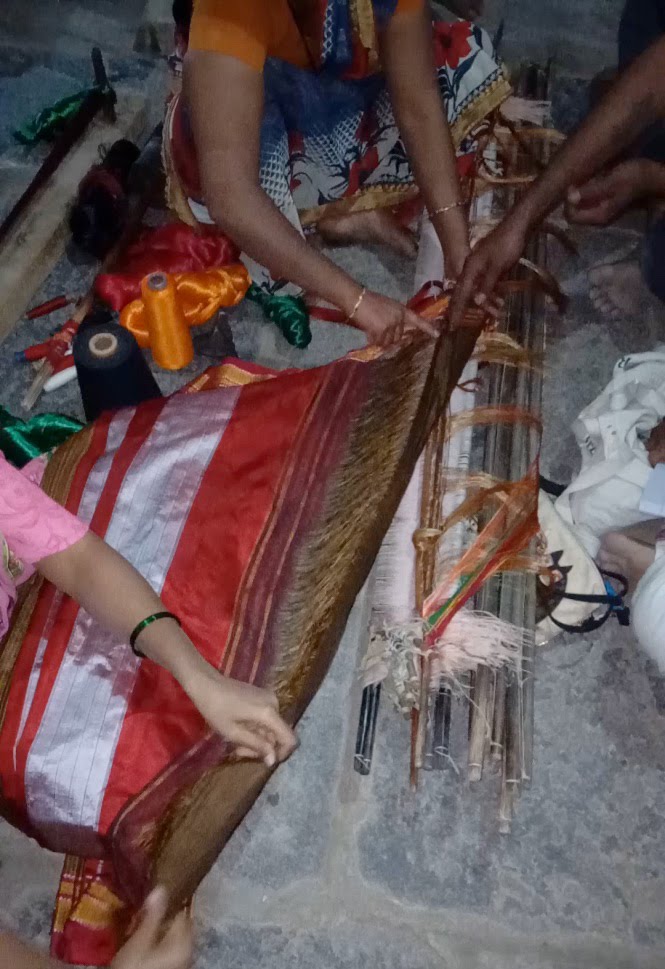|
Puneri Pagadi
The Puneri Pagadi is a distinctive style of turban, which is considered as a symbol of pride and honor in the city of Pune. It was introduced two centuries ago. Though it is a symbol of honour, the use of the ''pagadi'' has changed over the years and now it is also used on traditional days in colleges. To preserve the identity of the ''pagadi'', there were demands from the locals to grant it a Geographical Indication (GI) status. Their demand was fulfilled and the ''pagadi'' became an intellectual property on 4 September 2009. History The ''Puneri''-style pagadi was introduced in the 19th century by Mahadev Govind Ranade, a social reformer. Later, it was worn by many leaders like Lokmanya Tilak, J.S. Karandikar, D.D. Sathye, Dr. Vitthalrao Gade, Tatyasaheb Kelkar and Datto Vaman Potdar. The ''pagadi'' became more popular in 1973 after the Marathi play, ''Ghashiram Kotwal''. Usage The ''pagadi'' is used mostly on special occasions like wedding ceremonies and traditional days i ... [...More Info...] [...Related Items...] OR: [Wikipedia] [Google] [Baidu] |
Mahadev Govind Ranade
Mahadev Govind Ranade (18 January 1842 – 16 January 1901), popularly referred to as Justice Ranade, was an Indian scholar, social reformer, judge and author. He was one of the founding members of the Indian National Congress party and owned several designations as member of the Bombay legislative council, member of the finance committee at the centre, and judge of the Bombay High Court, Maharashtra. As a well known public figure, his personality as a calm and patient optimist influenced his attitude towards dealings with Britain as well as reform in India. During his life he helped to establish the ''Poona Sarvajanik Sabha'', Maharashtra Granthottejak Sabha and the ''Prarthana Samaj'', and edited a Bombay Anglo-Marathi daily paper, the '' Induprakash'', founded on his ideology of social and religious reform. He was given the title of Rao Bahadur. Early life and family Mahadev Govind Ranade was born into a Chitpavan Brahmin family in Niphad, a taluka town in Nashik dis ... [...More Info...] [...Related Items...] OR: [Wikipedia] [Google] [Baidu] |
Geographical Indication Registry (India)
The Office of the Controller General of Patents, Designs and Trade Marks (CGPDTM) generally known as the Indian Patent Office, is an agency under the Department for Promotion of Industry and Internal Trade which administers the Indian law of Patents, Designs and Trade Marks. History Foundation On 28 February 1856, the Government of India promulgated legislation to grant what was then termed as "exclusive privileges for the encouragement of inventions of new manufactures". On 3 March 1856, a civil engineer, George Alfred DePenning of 7, Grant's Lane, Calcutta petitioned the Government of India for grant of exclusive privileges for his invention — "An Efficient Punkah Pulling Machine". On 2 September, DePenning, submitted the Specifications for his invention along with drawings to illustrate its working. These were accepted and the invention was granted the first ever Intellectual Property protection in India. Amendments to the Patents Act & Rules Amendments (in 1999, 2002, 2 ... [...More Info...] [...Related Items...] OR: [Wikipedia] [Google] [Baidu] |
Indian Clothing
Clothing in India is dependent upon the different ethnicities, geography, climate, and cultural traditions of the people of each region of India. Historically, male and female clothing has evolved from simple garments like kaupina, langota, achkan, lungi, sari, well as rituals and dance performances. In urban areas, western clothing is common and uniformly worn by people of all social levels. India also has a great diversity in terms of weaves, fibers, colours, and material of clothing. Sometimes, color codes are followed in clothing based on the religion and ritual concerned. The clothing in India also encompasses the wide variety of Indian embroidery, prints, handwork, embellishment, styles of wearing clothes. A wide mix of Indian traditional clothing and western styles can be seen in India. History File:Mohenjo-daro Priesterkönig.jpeg, Statue of "Priest King" wearing a robe, Indus Valley civilisation. File:Didarganj Yakshi statue in the Bihar Museum.jpg, The Didarganj ... [...More Info...] [...Related Items...] OR: [Wikipedia] [Google] [Baidu] |
Indian Headgear
Indian or Indians may refer to: Peoples South Asia * Indian people, people of Indian nationality, or people who have an Indian ancestor ** Non-resident Indian, a citizen of India who has temporarily emigrated to another country * South Asian ethnic groups, referring to people of the Indian subcontinent, as well as the greater South Asia region prior to the 1947 partition of India * Anglo-Indians, people with mixed Indian and British ancestry, or people of British descent born or living in the Indian subcontinent * East Indians, a Christian community in India Europe * British Indians, British people of Indian origin The Americas * Indo-Canadians, Canadian people of Indian origin * Indian Americans, American people of Indian origin * Indigenous peoples of the Americas, the pre-Columbian inhabitants of the Americas and their descendants ** Plains Indians, the common name for the Native Americans who lived on the Great Plains of North America ** Native Americans in the Uni ... [...More Info...] [...Related Items...] OR: [Wikipedia] [Google] [Baidu] |
Navalgund Durries
Navalgund durries, geographically tagged in India, are woven durries or a type of Indian rug with geometric designs, birds, and animal designs from Navalgund in Dharwad district of Karnataka, India This durrie has been registered for protection under the Geographical indication of the Trade Related Intellectual Property Rights (TRIPS) agreement. In 2011, it was listed as "Navalgund Durries" under the GI Act 1999 of the Government of India with registration confirmed by the Controller General of Patents Designs and Trademarks under Class 27 vide application number 61 of 27 June 2011. The logo for this durrie was registered under application number 512, dated 8 January 2015. Location Navalgund, where the hand-made Navalgund durries are made, is located within the geographical coordinates of . History Nuvulgund durrigullu, also known as "jumkhaanaa" gullu in Kannada language, were initially made by a group of weavers of Bijapur who used to live in the Jumkhaan Gulli during the r ... [...More Info...] [...Related Items...] OR: [Wikipedia] [Google] [Baidu] |
Ilkal Saree
Ilkal sari is a traditional form of ''sari'' which is a common feminine wear in India. Ilkal sari takes its name from the town of Ilkal in the Bagalkot district of Karnataka state, India. Ilkal saris are woven using cotton warp on the body and art silk warp for border and art silk warp for pallu portion of the sari. In some cases instead of art silk, pure silk is also used. History Ilkal was an ancient weaving centre where the weaving seems to have started in the 8th century AD.Brief history of Ilkal saris is provided by The growth of these saris is attributed to the patronage provided by the local chieftains in and around the town of Bellary. The availability of local raw materials helped in the growth of this sari. About 20000 people in the town of Ilkal are engaged in sari-weaving.The history of Indian saris is discussed by Uniqueness * The uniqueness of sari is joining of the body warp with pallu warp with a series of loops locally called as TOPE TENI technique. * T ... [...More Info...] [...Related Items...] OR: [Wikipedia] [Google] [Baidu] |
Pheta (turban)
Pheta ( mr, फेटा) is the Marathi name for the distinctive traditional turban worn in Maharashtra, India. In ceremonies such as weddings, as well as festive, cultural, and religious celebration, it is common to wear Pheta. In many areas it is customary to offer male dignitaries a traditional welcome by offering them a ''Pheta'' to wear. A traditional ''Pheta'' is usually long cloth typically long and wide. The choice of colour may indicate the occasion for which it is being worn and also may be typical to the place it is being worn in. Typical colours include Saffron (to indicate valour) and White (to indicate peace). In the past, wearing a Pheta was considered a mandatory part of clothing. Varieties Other than the traditional white and Saffron encrusted Pheta, there are two other major varieties. One is the famous Kolhapuri Pheta, which comes in a multitude of colors and has a Bandhani effect on it. The other major variety consists of the Puneri Pheta which comes in c ... [...More Info...] [...Related Items...] OR: [Wikipedia] [Google] [Baidu] |
Pagri (turban)
Pagri, sometimes also transliterated as pagari, is the term for turban used in the Indian subcontinent. It specifically refers to a headdress that is worn by men and women, which needs to be manually tied. Other names include ''sapho''. Cloth A pagri is usually a long plain unstitched cloth. The length may vary according to the type. The cloth indicates the region and the community of the wearer. Specific styles ''khirki-dār-pagari'' Methods of binding the pagri are innumerable, and khirki-dar-pagri is one particular style of dressing the turban. Khirki-dar-pagri means the turban with a window. Brocade piece may decorate the turban. Paag The paag is a headdress in the Mithila region of Bihar and in Mithila, Nepal. Pheta Pheta is the Marathi name for the traditional turban worn in Maharashtra, India. In ceremonies such as weddings, festive and cultural and religious celebrations as well it is common to wear Pheta. In many parts it is customary to offer male dignitari ... [...More Info...] [...Related Items...] OR: [Wikipedia] [Google] [Baidu] |
Culture Of Pune
Culture () is an umbrella term which encompasses the social behavior, institutions, and norms found in human societies, as well as the knowledge, beliefs, arts, laws, customs, capabilities, and habits of the individuals in these groups.Tylor, Edward. (1871). Primitive Culture. Vol 1. New York: J.P. Putnam's Son Culture is often originated from or attributed to a specific region or location. Humans acquire culture through the learning processes of enculturation and socialization, which is shown by the diversity of cultures across societies. A cultural norm codifies acceptable conduct in society; it serves as a guideline for behavior, dress, language, and demeanor in a situation, which serves as a template for expectations in a social group. Accepting only a monoculture in a social group can bear risks, just as a single species can wither in the face of environmental change, for lack of functional responses to the change. Thus in military culture, valor is counted ... [...More Info...] [...Related Items...] OR: [Wikipedia] [Google] [Baidu] |
Banarasi Sari
A Banarasi sari is a sari made in Varanasi, an ancient city which is also called Benares (Banaras). The saris are among the finest saris in India and are known for their gold and silver brocade or zari, fine silk and opulent embroidery. The saris are made of finely woven silk and are decorated with intricate design, and, because of these engravings, are relatively heavy. Their special characteristics intricate intertwining floral and foliate motifs, ''kalga'' and ''bel'', a string of upright leaves called ''jhallar'' at the outer, edge of border is a characteristic of these saris. Other features are gold work, compact weaving, figures with small details, metallic visual effects, pallus, jal (a net like pattern), and mina work. The saris are often part of an Indian bride's trousseau. Depending on the intricacy of its designs and patterns, a sari can take from 15 days to a month and sometimes up to six months to complete. Banarasi saris are mostly worn by Indian women on impor ... [...More Info...] [...Related Items...] OR: [Wikipedia] [Google] [Baidu] |
Darjeeling Tea
Darjeeling tea is a tea made from ''Camellia sinensis var. sinensis'' that is grown and processed in Darjeeling or Kalimpong Districts in West Bengal, India. Since 2004, the term ''Darjeeling tea'' has been a registered geographical indication referring to products produced on certain estates within Darjeeling and Kalimpong. The tea leaves are processed as black tea, though some estates have expanded their product offerings to include leaves suitable for making green, white and oolong teas. The tea leaves are harvested by plucking the plant's top two leaves and the bud, from March to November, a time span that is divided into four flushes. The first flush consists of the first few leaves grown after the plant's winter dormancy and produce a light floral tea with a slight astringency; this flush is also suitable for producing a white tea. Second flush leaves are harvested after the plant has been attacked by a leafhopper and the camellia tortrix so that the leaves create a tea ... [...More Info...] [...Related Items...] OR: [Wikipedia] [Google] [Baidu] |
Headgear
Headgear, headwear, or headdress is the name given to any element of clothing which is worn on one's head, including hats, helmets, turbans and many other types. Headgear is worn for many purposes, including protection against the elements, decoration, or for religious or cultural reasons, including social conventions. Purposes Protection or defence Headgear may be worn for protection against cold (such as the Canadian tuque), heat, rain and other precipitation, glare, sunburn, sunstroke, dust, contaminants, etc. Helmets are worn for protection in battle or against impact, for instance when riding bicycles or motor vehicles. There are also hats that are worn for protection from the cold. Fashion Headgear can be an article of fashion, usually hats, caps or hoods. The formal man's black silk top hat was formerly an indispensable portion of the suit, and women's hats have, over the years, attained a fantastic number of shapes ranging from immense confections to no mo ... [...More Info...] [...Related Items...] OR: [Wikipedia] [Google] [Baidu] |




_(8411728143).jpg)

%2C_silk_and_gold-wrapped_silk_yarn_with_supplementary_weft_brocade.jpg)

